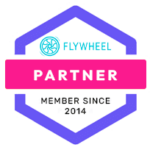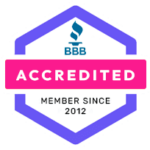High bounce rates are issues that plague digital marketers. So, if you are experiencing high bounce rates on your website, don’t fret – you are not alone.
In contrast to what you might even think, finding a high bounce rate is not all bad news. Look on the bright side; it is a window to improve your website.
In any case, you can tweak your bounce rate to a more manageable one with a little effort – to do that, you must understand why it happens, and most importantly, you must learn the ways to fix it.
But first, what is a high bounce rate? Is it even as bad as proclaimed?
Understanding High Bounce Rate – The Definition & How It’s Calculated
Definition
A high bounce rate means visitors leave your site as soon as they land on it because they couldn’t get what they need. That looks bad, eh? Here’s a twist: A high bounce rate as defined above doesn’t always mean bad news. How so?
A visitor might need precise information and leave immediately when he finds it. For example, say a guest needs your working hours, in that case, he will only scroll to the end of your landing page where those hours are listed and then bounce off your site.
That instance will contribute to a high bounce rate, but it is not always bad. Yes, the visitor bounced, but since he will visit your office, your actual conversion doesn’t suffer.
So, when is a high bounce rate “bad”? If a guest visits your website, leaves instantly but doesn’t convert, that’s a bad high bounce. Now, you might be wondering, how can you tell the difference? How can you even measure bounce rate?
How To Calculate Bounce Rate
The easy way to calculate bounce rate is with an analytics tool like Google Analytics. With proper analytics, you get the percentages for every page of your website.
The best part: Google Analytics does more than just showing bounce rates. It highlights metrics that can differentiate between a good or bad bounce rate.
Some of the said metrics include:
- Number of visitors that viewed your site;
- The average number of pages the visitors viewed per visit; and
- How long the visitors spend on the pages.
When you combine the listed metrics, you will get a clear picture of your conversion. For example, if visitors spend a considerable time on your website but the bounce rate is high, that is usually good for you. How so?
Such an instance typically means that visitor found the information they were looking for and didn’t need to visit other pages on your site.
If the visitors often return to the same page, all the better. It means the high bounce rate is “good.” Such situations happen if the said page is informative.
That said, the only time you should worry about a high bounce rate is when the percentages are outrageous, but the conversion remains low. About that, the extreme score you should be wary of is 70% and above.
If you have a 70% (or even more) bounce rate and a low conversion, what could be the cause?

4 Key Contributing Factors To A High Bounce Rate
Page Speed
The first reason users bounce your site is the speed. A website that takes more than a few seconds to load can be cause for people to leave. Your visitor would usually even exit the page before it loads all the content.
If you’re not sure how to fix your website speed, check this guide. The post contains the tricks and tools you can use to fix the worry.
Technical Glitches
Outside of website speed, another common reason people bounce off of your site is technical glitches. The chances are that visitors couldn’t even access the content on your pages because of things like script and plugin errors.
Script and plugins, in particular, can be crucial elements to your site, but when they go wrong, they can cause technical glitches and hamper your website speed. So, be cautious to examine their effects on your bounce rate.
Poorly Written Content
Say your website loads fast, and there are no glitches; what about your content? Visitors come to your website to learn more about you, your services, and your offers. For these reasons, they are obviously going to read your content.
Now, imagine that you have written unprofessional, ill-researched, and poor-quality content!
So, work on your content and make sure that you are focusing on quality not quantity. Research your visitors’ needs and write informative and engaging posts that appeal to those needs. Do that, and your bounce rate will reduce, and more importantly, your conversion will significantly increase.
Poor Designs & Overall User Experience
Informative content and a fast website will only give you a headstart. Still, you must appeal to visitor’s emotions with color and design. Besides color, your website layout should ooze class. More importantly, the navigation should be easy and smooth. Is your website even mobile-friendly? If you answered no, make it mobile-friendly.
While you are at it, reduce the nagging popup messages.
Overall, work on the appeal and user experience of your website. When you do, your bounce rate will normalize – and even you will enjoy visiting your own website.
However, note that you need a professional web designer for this stage, someone who is an expert and have experience across different platforms and technologies. A professional like J. Louis Technology 😉
Now, we have identified the usual factors contributing to a high bounce rate, let’s see how to correct them.

Reducing Your Bounce Rate In 5 Easy Steps
Always Start With The Worst
Regardless of how high your website’s overall bounce rate, one page suffers the most. So, find and fix that first.
How do you fix the said page?
- First, isolate, after, observe the page like a visitor would and note all the errors you could find.
- Second, fix the errors as soon as you find them.
- Lastly, look for ways to improve the design and navigation of the said page.
Use A Heatmap
Once you fix the page with the highest bounce rate, get a heatmap tool. With one, you will see the visuals of what your visitors do when they visit your website.
Another benefit of using heatmaps is how it pinpoints areas of users’ concentration. Thanks to that, you will know where to sneak your call-to-action and click baits into the design.
Want a visualization tool that reveals more heatmap? If yes, the next tip is what you seek.
Watch How Visitors Navigate Your Website
You probably don’t know this, but you can spy on your visitors. You can see how they navigate through your pages, the moves they make, and the delay – everything.
Don’t worry; it is legal! The process even has a name: website recording.
Website recording uses a tool installed on your site to watch the activities of your visitors. Thanks to the innovative idea, you will know the exact steps to reduce your bounce rate.
Use A/B Testing And Implement The Tips
By now, you’ve identified the pages and points that nerve your visitors. Now, make adjustments to your website, clone such changes, and let your audience decide which is best.
Once you have your results, use the positive side and implement it on your website. While you are at it, don’t make too many changes all at once; do it in bits so you can better track the effects of each change.
Start Again
If you want to lower your bounce rate even further, repeat steps 1 to 4. The best part: you can repeat as many times as you wish until you arrive at a desirable percentage.
At last, a high bounce rate is no longer an issue for you. Cheers!
If you need similar resourceful posts like this, check our blog. Perhaps you have unique queries; get in touch, and we will help.










